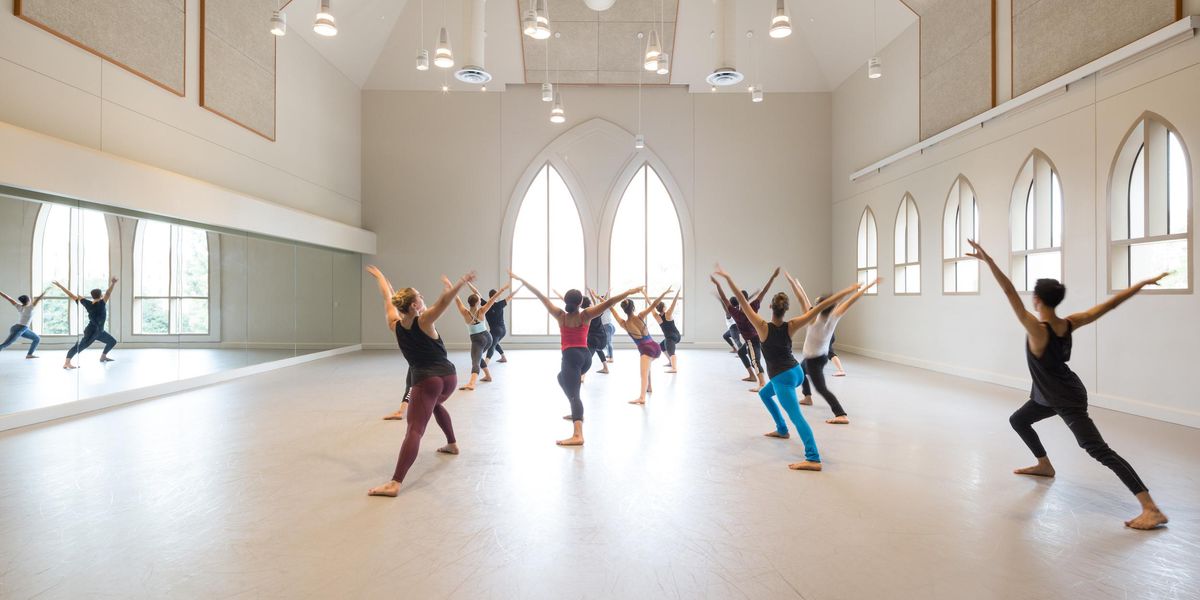Advice for Dancers: No Mirror? No Problem
I have trouble learning new choreography. I can’t feel the steps and need the mirror to see how to perform each routine. What should I do when the rehearsal is onstage?
—Visual Learner, Las Vegas, NV
Visual learners pick up combinations by watching someone else demonstrate, but you don’t inevitably need a mirror. You just need to be able to see the choreography done in front of you. Other common learning styles include using verbal instructions or kinesthetic feedback where you physically do the steps. Since everyone learns differently, it’s helpful when choreographers use a variety of teaching styles, like explaining the step, demonstrating it and allowing you to practice it. In your case, the difficulty lies in actually feeling the movements, a problem typically found in hypermobile dancers who have poor proprioception. This inherited connective tissue syndrome makes it hard for you to know where your body is in space, putting you at a disadvantage when learning. Although you can get away with mimicking dance steps by gripping your muscles, you won’t necessarily be working correctly. Fortunately, hypermobile dancers can retrain their bodies with repetitive exercises, and simple verbal cues along with touch can help you learn to engage the appropriate muscles. There is a checklist in my book, The Dancer’s Way: The New York City Ballet Guide to Mind, Body, and Nutrition, that you can use to find out if you are hypermobile. A physical therapist or Pilates instructor can then put you on a special program. Besides helping you to master the choreography, you’ll be more likely to remain injury-free. A win-win combination!
Will e-cigarettes help me quit smoking? It’s stupid to smoke on the roof of my theater every day with the other dancers when it could kill me. My uncle died of lung cancer, and I don’t want the same thing to happen to me.
—Tony, New York, NY
You’re smart! Unfortunately, the jury is still out about the long-term impact of smokeless cigarettes. They are not regulated by the U.S. Food and Drug Administration and can contain harmful contaminants. While research on would-be quitters does show that e-cigarettes are as effective as a nicotine patch in helping you stay smoke-free, there’s a general tendency to cheat. Why? Smokers crave a bigger hit of the highly addictive nicotine found in real cigarettes compared to the infused vapor available from the electronic kind. As a result, there’s more chance that you’ll switch back and forth in order to smoke the real McCoy. Still, you’re definitely on the right track if you’re serious about changing this habit. Among dual users, roughly half of those who are trying to quit stop smoking traditional cigarettes after a year—although they continue to use e-cigarettes. For more help, check out quitnet.com, an online forum for tips, support and expert advice on stopping smoking.
I just received three job re
jections after feeling like I had nailed two ballet auditions and did okay in a contemporary one. One ballet company offered free classes (give me a break!), while the other said they didn’t have work for someone at “my level.” No news from the modern group. If my audition isn’t good enough for any of them, what is?
—Hopeless, San Diego, CA
First of all, take a moment to realize that you’ve only auditioned for three companies, so it’s premature to throw in the towel. Instead, try being positive and proactive by accepting the ballet company’s invitation to take class—which could lead to work—while you continue to audition. Being asked to take class is a huge opportunity to learn about the company and for them to get to know you. In fact, I often advise dancers to ask permission to take company class to increase their chances of getting hired. Also, make an effort to learn from your experience. If you feel that your contemporary technique is weak, amp up those classes to prepare for future opportunities. Likewise, it can help to feel more in control by realizing it’s your choice to pursue this career. It’s equally important to adjust to who’s hiring and promoting dancers, circumstances which are constantly changing. Finally, keep things in perspective by maintaining a balance between work and other aspects of your life, and surround yourself with a support network of trusted colleagues, mentors, family and friends. Remember: Resiliency isn’t outside your grasp. It comes from tapping into ordinary human resources right at your fingertips.
Send your questions to:
Dr. Linda Hamilton
2000 Broadway, PH2C, New York, NY 10023
email: [email protected]
Former New York City Ballet dancer Linda Hamilton, Ph.D., is a psychologist in private practice, the author of Advice for Dancers (Jossey-Bass) and co-author of The Dancer’s Way: The New York City Ballet Guide to Mind, Body, and Nutrition (St. Martin’s Griffin). Her website is drlindahamilton.com.
Send your questions to:
Dr. Linda Hamilton
2000 Broadway, PH2C, New York, NY 10023
email: [email protected]
Former New York City Ballet dancer Linda Hamilton, Ph.D., is a psychologist in private practice, the author of Advice for Dancers (Jossey-Bass) and co-author of The Dancer’s Way: The New York City Ballet Guide to Mind, Body, and Nutrition (St. Martin’s Griffin). Her website is drlindahamilton.com.
– See more at: http://www.dancemagazine.com/issues/May-2014/Advice-for-Dancers-Should-You-Get-Bunion-Surgery#sthash.3qgTnk2J.dpuf
Send your questions to:
Dr. Linda Hamilton
2000 Broadway, PH2C, New York, NY 10023
email: [email protected]
Former New York City Ballet dancer Linda Hamilton, Ph.D., is a psychologist in private practice, the author of Advice for Dancers (Jossey-Bass) and co-author of The Dancer’s Way: The New York City Ballet Guide to Mind, Body, and Nutrition (St. Martin’s Griffin). Her website is drlindahamilton.com.
– See more at: http://www.dancemagazine.com/issues/May-2014/Advice-for-Dancers-Should-You-Get-Bunion-Surgery#sthash.3qgTnk2J.dpuf




